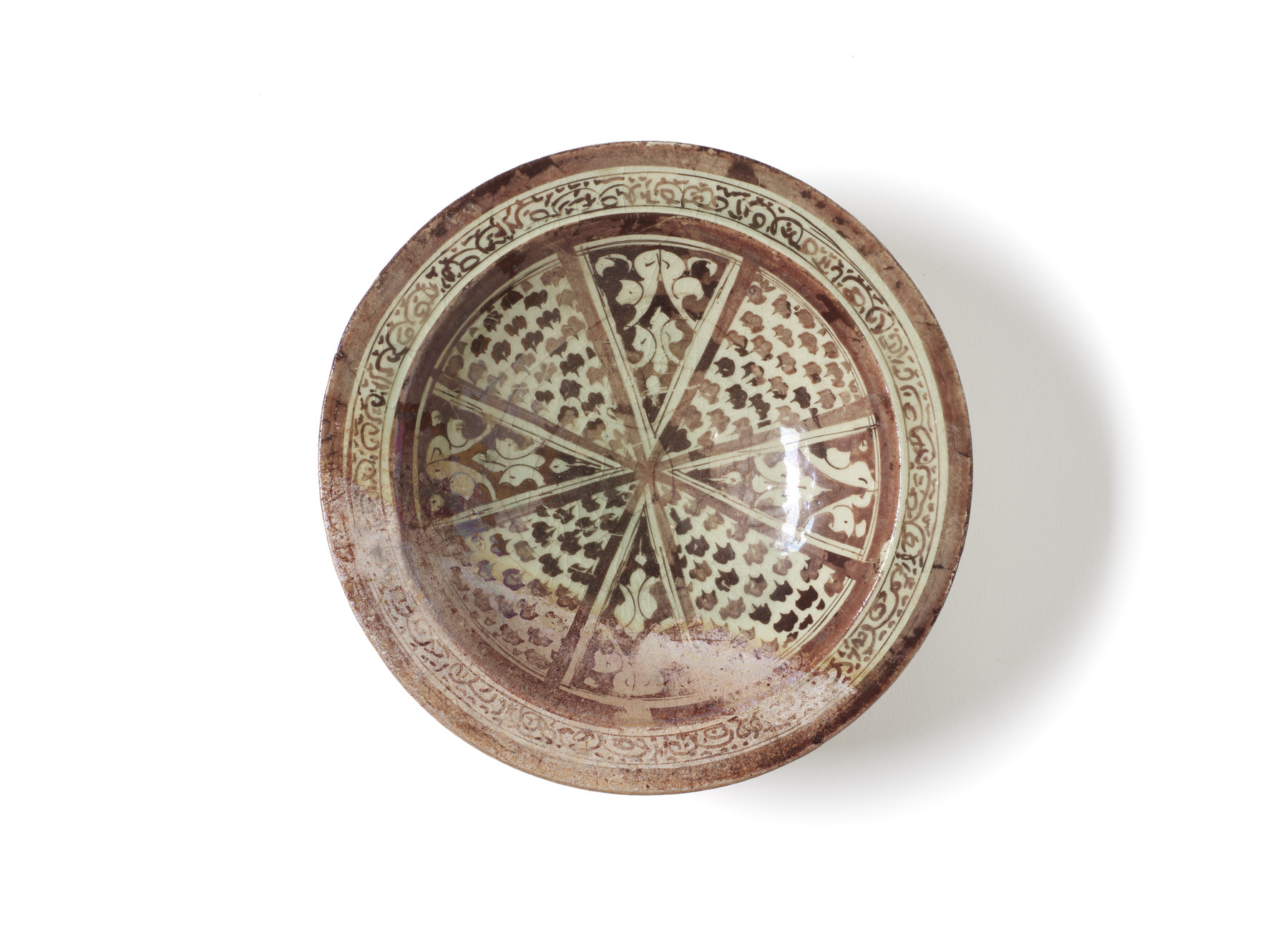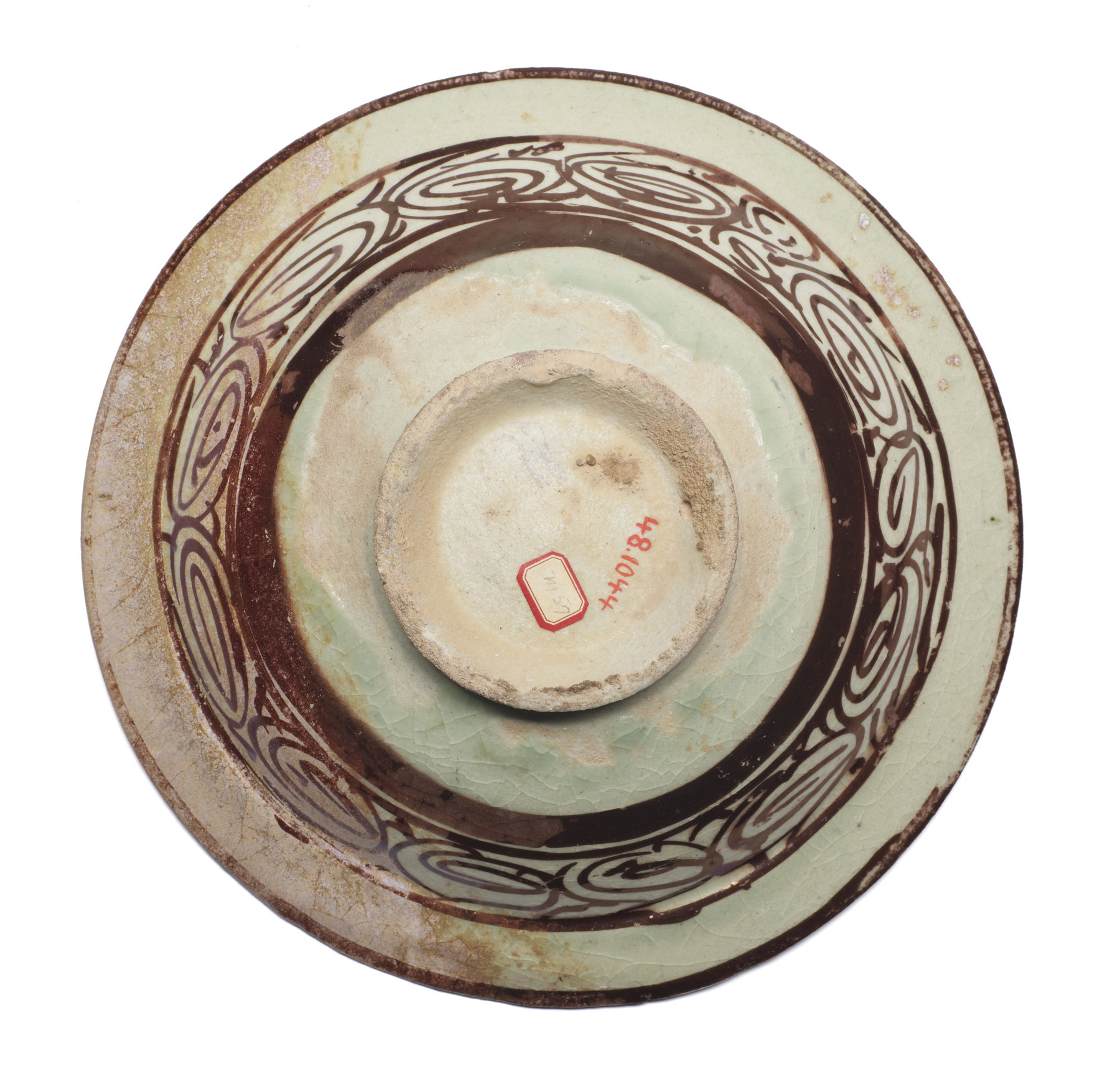Raqqa Lusterware Bowl
(Islamic World )
In Arab countries and Muslim realms in the Mediterranean region, artistic innovation flourished in the 9th-14th centuries. Lusterware was among the most original development of Arab potters, who mixed silver sulfides and copper oxides to create a shiny, metallic sheen on the surface of glazed earthenware bowls, plates, and other utilitarian vessels, such as this Raqqa lusterware bowl.
Provenance
Provenance (from the French provenir, 'to come from/forth') is the chronology of the ownership, custody, or location of a historical object. Learn more about provenance at the Walters.
Henry Walters, Baltimore [date and mode of acquisition unknown]; Walters Art Museum, 1931, by bequest.
Geographies
Syria (Place of Origin)
Measurements
H: 2 5/8 x Diam: 10 1/4 in. (6.7 x 26 cm)
Credit Line
Acquired by Henry Walters
Location in Museum
Not on view
Accession Number
In libraries, galleries, museums, and archives, an accession number is a unique identifier assigned to each object in the collection.
In libraries, galleries, museums, and archives, an accession number is a unique identifier assigned to each object in the collection.
48.1044






